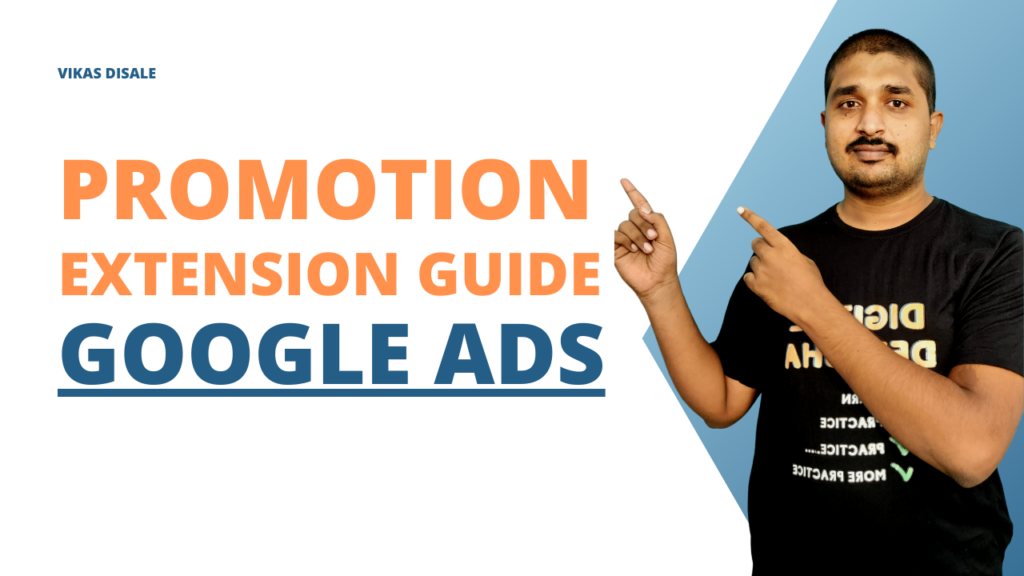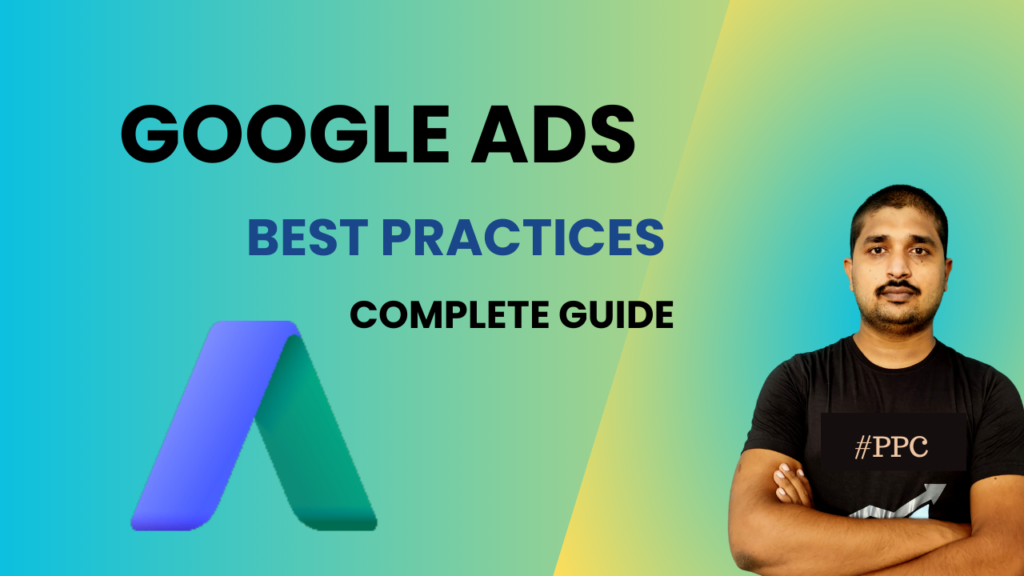
Google Ads best practices are essential for businesses that want to maximize their return on investment from this powerful online advertising platform.
With its extensive reach and targeting capabilities, Google Ads can help businesses of all sizes reach their target audience and achieve their marketing goals.
However, it is important to follow certain best practices in order to create effective campaigns and generate results.
In this blog post we’ll dive into the Google ads best practices for maximising ROI.
Table of Contents
What are Google Ads?
Google Ads, formerly known as Google AdWords, is an online advertising service offered by Google. It allows businesses to display ads on Google’s search engine results pages (SERPs), partner websites, YouTube, and other digital platforms.
These ads can appear as text, images, videos, or interactive media, making it a versatile platform for various advertising goals.
Benefits of using Google Ads:
1. Reach a Relevant Audience:
Google Ads provides powerful targeting options, allowing you to display your ads to a specific audience based on factors such as keywords, demographics, locations, and interests. This precise targeting ensures that your ads reach the right people at the right time.
2. Cost-Effective Advertising:
Google Ads operates on a pay-per-click (PPC) model, which means you only pay when someone clicks on your ad. This allows you to set a budget that suits your needs and ensures you’re only spending on actual engagement with your ads.
3. Measurable Results:
Google Ads provides comprehensive analytics and reporting tools, allowing you to track the performance of your ads in real-time. You can measure important metrics such as impressions, clicks, conversions, and return on investment (ROI), giving you
4. Enhance Brand Visibility:
With Google Ads, you can increase your brand’s visibility across a range of platforms, including search engines, websites, and video sharing platforms like YouTube.
This widespread exposure helps to create brand awareness and establish your business as a trusted authority in your industry.
Different types of Google Ads
Google Ads offers a diverse range of campaign types, each designed to cater to specific advertising goals.
Search Ad Campaigns:
Search ad campaigns are the foundation of Google Ads and allow you to display text ads on Google search results pages. They target users actively searching for specific keywords or phrases related to your business.
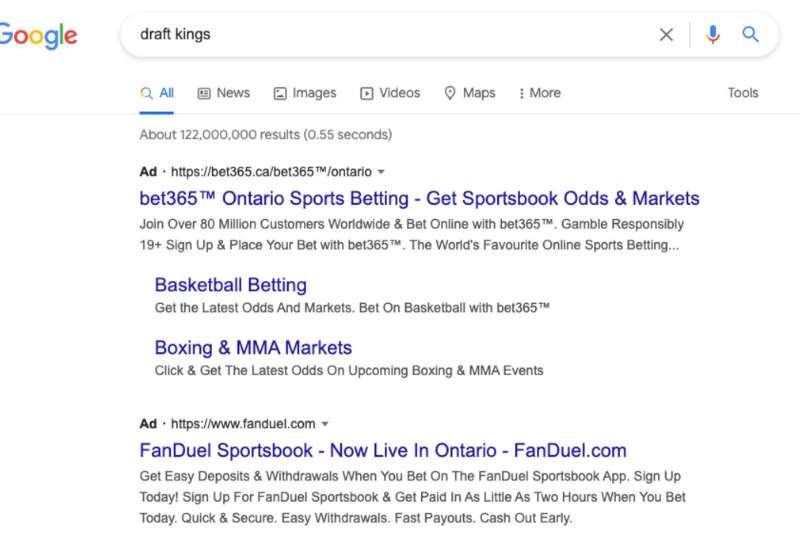
Within search ad campaigns, consider utilizing responsive search ads, which dynamically adapt your headlines and descriptions to optimize performance and increase ad relevance.
Display Ad Campaigns:
Display ad campaigns enable you to showcase visually engaging ads across a vast network of websites and apps. These campaigns use eye-catching images, videos, and interactive elements to capture users’ attention and build brand awareness.
With extensive targeting options, you can reach your audience based on demographics, interests, and browsing behavior.
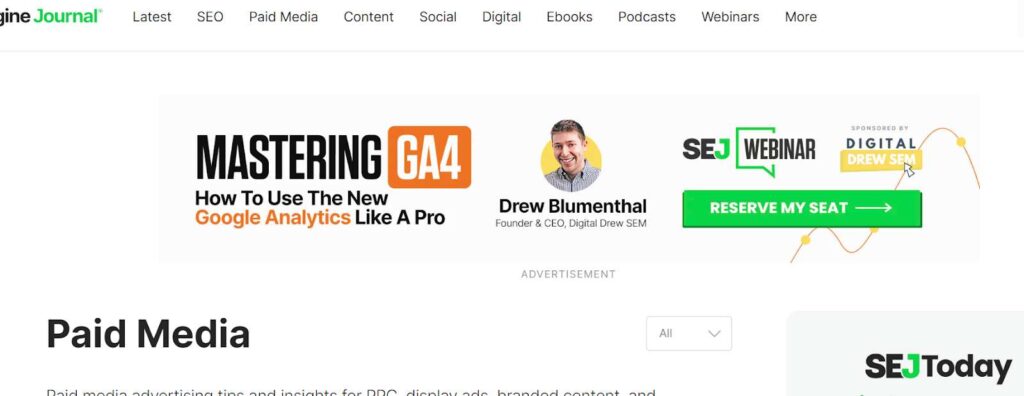
Video Ad Campaigns:
Video ad campaigns leverage the power of video content to engage users on platforms like YouTube and the Google Display Network.

Whether it’s short skippable ads, non-skippable ads, or bumper ads, video campaigns allow you to tell your brand story, demonstrate products, and engage users through captivating visual storytelling.
App Ad Campaigns:
App ad campaigns are designed to promote mobile applications across the Google network, including Google Search, Google Play, YouTube, and partner apps.
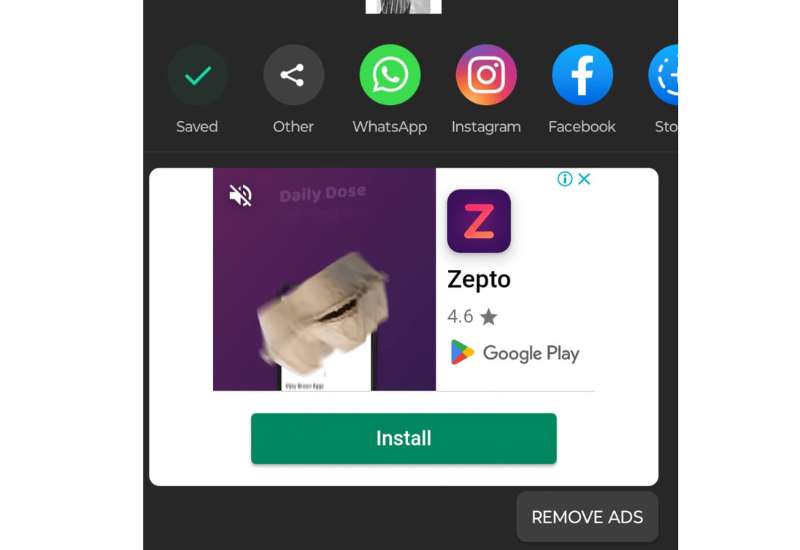
These campaigns help you reach potential users who are actively searching for apps or are likely to engage with your app content. They drive app installs, user engagement, and conversions within your mobile application.
Shopping Ad Campaigns:
Shopping ad campaigns are tailored for businesses that sell products online. They showcase your product images, prices, and details directly within Google search results and other Google platforms.
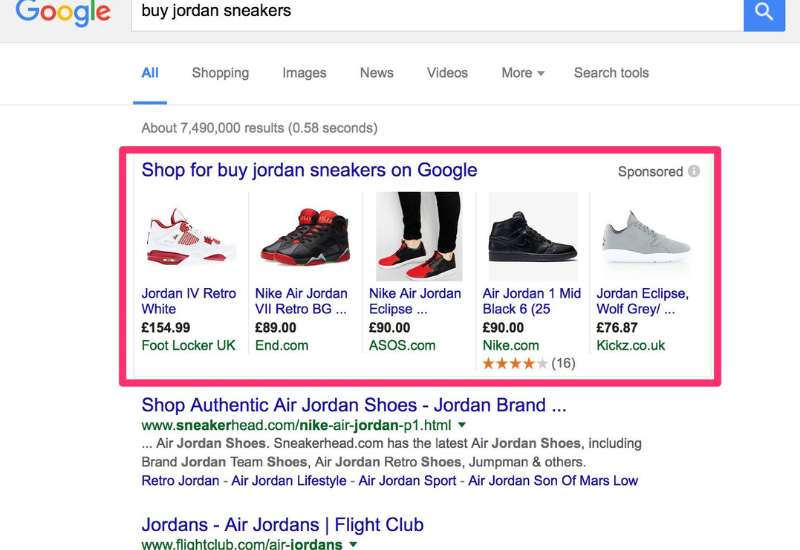
With shopping campaigns, you can reach users who are specifically looking for products you offer, leading to higher purchase intent and conversion rates.
Setting up a Google Ads Account with the Google Ads Best Practices:
To set up a Google Ads campaign, you will need to create an account and then follow these steps:
1. Creating a Google Ads Account:
To create a Google Ads account, follow these steps:
a. Visit the Google Ads website and click on the “Start Now” button.
b. Sign in with your Google account or create a new one if you don’t have an existing account.
c. Follow the on-screen instructions to set up your account, including providing your business information.
2. Choose your campaign goal.
Google Ads offers a variety of campaign goals, such as:
- Website traffic: Increase the number of visitors to your website.
- Leads: Generate leads, such as contact form submissions or email signups.
- Sales: Drive sales of your products or services.
- Brand awareness: Increase brand awareness and consideration.
Choose the campaign goal that is most relevant to your business and marketing goals.
2. Set your budget.
You can set a daily or weekly budget for your Google Ads campaign. Google Ads will not spend more than the amount you set.
When setting your budget, consider your marketing goals and how much money you are willing to spend to achieve those goals.
3. Choose your keywords.
Keywords are the words and phrases that people use to search for information online. When people use these words and phrases in their searches, Google Ads will display relevant ads.
To choose the right keywords to target, consider your products or services, your target audience, and the types of searches they are likely to perform.
You can also use Google’s Keyword Planner tool to research keywords and get ideas for new keywords to target.
4. Write your ad copy.
Your ad copy is the text that will appear in your ad. It is important to write clear, concise, and compelling ad copy that will capture people’s attention and encourage them to click on your ad.
Your ad copy should be relevant to your keywords and your landing page. It should also be clear and concise, and it should include a strong call to action, such as “Shop now” or “Learn more.”
5. Create your landing page.
Your landing page is the page that people will land on after they click on your ad. It is important to create a relevant landing page that is tailored to your ad campaign.
Your landing page should be well-designed and informative, and it should have a clear call to action, such as “Shop now” or “Learn more.”
6. Launch your campaign.
Once you have created your campaign, you can launch it. Google Ads will start reviewing your campaign and, once it is approved, your ads will start appearing in search results.
Once your campaign is launched, it is important to track your results and optimize your campaign accordingly. You can use Google Ads’ reporting tools to track your campaign performance and identify areas where you can improve.
By following these steps, you can set up a Google Ads campaign that will help you achieve your business goals.
Factors That Influence Google Ads
Google Ads is a dynamic advertising platform that offers numerous opportunities for businesses to reach their target audience effectively. To achieve optimal results, it’s essential to understand the factors that influence the performance of your Google Ads campaigns.
AdRank:
AdRank is a crucial factor in determining the placement and visibility of your ads in Google search results. It is calculated based on the quality of your ad, the relevance of your keywords, and your bid amount.
To improve your AdRank, focus on optimizing your ad quality, increasing keyword relevancy, and setting competitive bids.
Location:
Location targeting allows you to tailor your ads to specific geographic locations. This factor is particularly important for businesses that operate in specific regions or want to target customers in particular areas.
By refining your location targeting, you can ensure your ads are displayed to the most relevant audience, increasing the chances of conversions.
Keywords:
Keywords play a vital role in determining when and where your ads appear. Conduct thorough keyword research to identify the terms and phrases that your target audience is likely to use when searching for your products or services.
Use a mix of broad, exact, and phrase match keywords strategically to optimize your reach and relevance.
Match Types:
Google Ads offers different match types for your keywords, including broad match, broad match modifier, phrase match, and exact match. Each match type has its own impact on the reach and relevance of your ads.
By understanding and utilizing the appropriate match types, you can control how closely your keywords must match user search queries, ensuring your ads are displayed to the most relevant audience.
1. Broad Match:
Broad match is a keyword match type that allows your ads to show for a wide range of related search queries. It includes variations, synonyms, and related terms. This match type offers the broadest reach but may also result in less precise targeting.
2. Broad Match Modifier:
Broad match modifier is a keyword match type that provides more control than broad match. By adding a “+” symbol in front of specific words within a keyword phrase, you can indicate that those terms must be present in the user’s search query for your ad to show. It offers a balance between reach and specificity.
3. Phrase Match:
Phrase match is a keyword match type that allows your ads to display when the search query includes the keyword phrase in the exact order, with additional words before or after it. By enclosing the keyword phrase in quotation marks, you ensure your ad is shown to users searching for that specific phrase.
4. Exact Match:
Exact match is a keyword match type that shows your ads only when the search query perfectly matches your keyword or close variations. By enclosing the keyword phrase in brackets, you can narrow down your targeting to a specific term, ensuring high relevance and precision.
These match types help you control how closely your keywords must match a user’s search query, allowing you to balance reach and relevance in your Google Ads campaigns.
Headline and Description:
Compelling and engaging ad copy is crucial for attracting attention and encouraging clicks. Craft attention-grabbing headlines that incorporate relevant keywords and clearly convey the value proposition of your offering.
Use the description to highlight key features, benefits, and unique selling points that differentiate your business from competitors.
Ad Extensions:
Ad extensions enhance your ads by providing additional information or interactive elements.
Ad extensions not only improve the visibility of your ads but also provide users with more opportunities to engage with your business, increasing the chances of conversions.
They can include
- SitelinksExtension:
- Call Extensions:
- Location Extensions:
- Callout Extension
- Lead Form Extension
- Promotion Extension:
- App Extension:
These extensions enhance your Google Ads by providing additional information, functionality, and engagement opportunities, making your ads more appealing and effective in driving conversions.
Get Know more about Google Ads Extensions here.
Google Ads Retargeting:
Retargeting, also known as remarketing, allows you to reach users who have previously interacted with your website or ads.
By using tracking pixels and cookies, you can target these users with personalized ads, reminding them of your brand and encouraging them to revisit your website or complete a desired action.
Retargeting can significantly boost conversion rates and improve campaign ROI.
Section 1: Defining Campaign Objectives:
1. Identifying specific goals for the campaign:
Before diving into the world of Google Ads, clearly define your campaign objectives.
Do you want to increase brand awareness, drive website traffic, or boost conversions?
Setting specific goals will guide your campaign strategy and ensure you’re on the right path to success.
2. Choosing the right campaign type based on objectives:
Google Ads offers various campaign types, each tailored to different objectives. Whether it’s search, display, shopping, or video campaigns, selecting the right type aligned with your objectives is crucial for effectively reaching your target audience.
3. Selecting the appropriate campaign settings:
Pay close attention to campaign settings, as they play a pivotal role in campaign performance. Customize factors such as location targeting, ad scheduling, budget allocation, and bidding strategies to optimize your campaign’s effectiveness and maximize your return on investment.
Keyword Research and Selection:
1. Understanding the importance of keywords in Google Ads:
Keywords are the fuel that powers your Google Ads campaigns. They connect your ads with the users searching for your products or services. Recognize the significance of keywords in driving relevant traffic and ensuring your ads are shown to the right audience.
2. Conducting keyword research using Google Keyword Planner:
Utilize the powerful Google Keyword Planner to conduct comprehensive keyword research. Identify relevant search terms, explore their search volumes, and discover new keyword ideas. This research will provide valuable insights into the keywords that will resonate with your target audience.
3. Choosing relevant and high-performing keywords:
Selecting the right keywords is key to a successful campaign. Choose relevant keywords that align with your business offerings and target audience.
Look for high-performing keywords with a balance of search volume, competition, and relevance to maximize the effectiveness of your ads.
Ad Creation and Optimization:
1. Writing compelling ad copy:
Craft ad copy that captures attention, conveys your unique value proposition, and prompts users to take action. Use persuasive language, highlight key benefits, and address users’ pain points to create compelling ad content that resonates with your audience.
2. Creating effective ad headlines and descriptions:
The headline and description of your ad play a crucial role in attracting users’ attention. Create attention-grabbing headlines that spark interest and clearly communicate the value of your offering. Craft concise, informative descriptions that encourage users to click and explore further.
3. Utilizing ad extensions to enhance ad visibility:
Take advantage of ad extensions to provide additional information and increase the visibility of your ads. Add sitelinks to direct users to specific pages on your website, incorporate call extensions for direct phone access, and utilize location extensions to highlight your business’s physical presence.
4. A/B testing different ad variations:
Experiment with different ad variations to identify the most effective combination of headlines, descriptions, and visuals. A/B testing allows you to compare different elements and measure their performance, enabling you to refine and optimize your ads for maximum impact.
Section 2: Targeting and Audience Segmentation:
1. Determining target audience demographics:
Define your target audience based on demographics such as age, gender, income, and interests. Understand their needs, preferences, and pain points to create ads that resonate with them.
2. Using location targeting to reach specific geographic areas:
Leverage location targeting to focus your ads on specific regions, cities, or even specific radius areas around your business. This ensures that your ads are seen by users in the locations most relevant to your business.
3. Utilizing audience targeting based on interests or behaviors:
Utilize audience targeting options to reach users based on their interests, behaviors, or past interactions. This allows you to show your ads to individuals who are more likely to engage with your offering, increasing the chances of conversions.
Setting Budgets and Bidding Strategies:
Understanding different bidding options in Google Ads:
Familiarize yourself with bidding options such as manual CPC (Cost-Per-Click), automated bidding strategies, and enhanced CPC. Each option has its advantages and considerations. Choose the one that aligns with your goals and budget.
Setting daily budgets and bid amounts:
Determine your daily budget based on your advertising goals and financial capacity. Set bid amounts that reflect the value you’re willing to pay for clicks or conversions. Continuously monitor and adjust budgets and bids to optimize campaign performance.
Implementing bidding strategies for campaign optimization:
Leverage bidding strategies like:
- target CPA (Cost-Per-Acquisition)
- target ROAS (Return on Ad Spend)
- Enhanced Cost Per Click (ECPC)
- Target Impression Share
- Maximize Conversions, etc.
To optimize your campaigns for specific conversion goals or desired return on investment. These strategies automate bidding to maximize performance based on your defined objectives.
Know more about Bidding Strategies here.
Tracking and Measurement:
Installing conversion tracking codes: Install conversion tracking codes on your website to track valuable actions, such as purchases, form submissions, or newsletter sign-ups. This allows you to measure the effectiveness of your ads and attribute conversions accurately.
Analyzing campaign performance using Google Analytics:
Integrate Google Analytics with your Google Ads account to gain comprehensive insights into user behavior, engagement, and conversion data. Analyze metrics such as click-through rate (CTR), conversion rate, and bounce rate to evaluate campaign performance and identify areas for improvement.
Making data-driven decisions for campaign optimization:
Regularly review campaign performance data and make data-driven decisions to optimize your campaigns. Adjust bids, refine targeting, and optimize ad copy based on the insights gained. Continuously test and refine your strategies for ongoing campaign improvement.
Remember that optimizing your Google Ads campaigns is an ongoing process. Regularly review performance, experiment with different strategies, and adapt to changing market conditions. By embracing continuous optimization, you’ll stay ahead of the competition and drive sustained success in Google Ads.
Conclusion
Google Ads is a powerful online advertising platform that can help businesses of all sizes reach their target audience and achieve their marketing goals.
However, to get the most out of Google Ads, it’s important to follow some best practices.
By following these google ads best practices, you can create effective campaigns that will help you achieve your marketing goals.
Vikas Disale is Digital Marketer and practicing SEO, Social Media, Paid Ads since 2011. Vikas like to share his knowledge via Podcast, YouTube videos.



